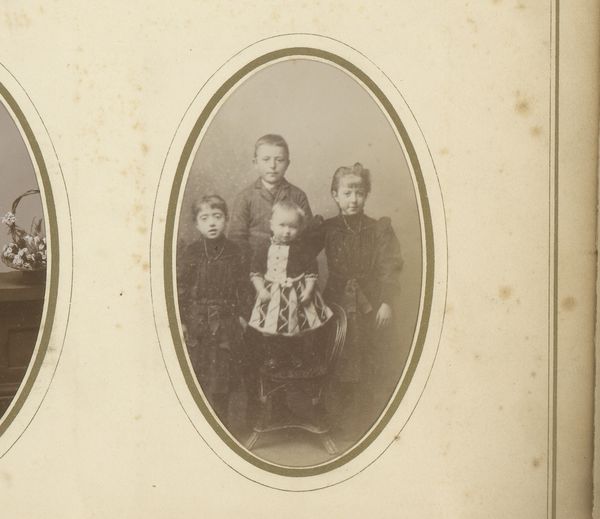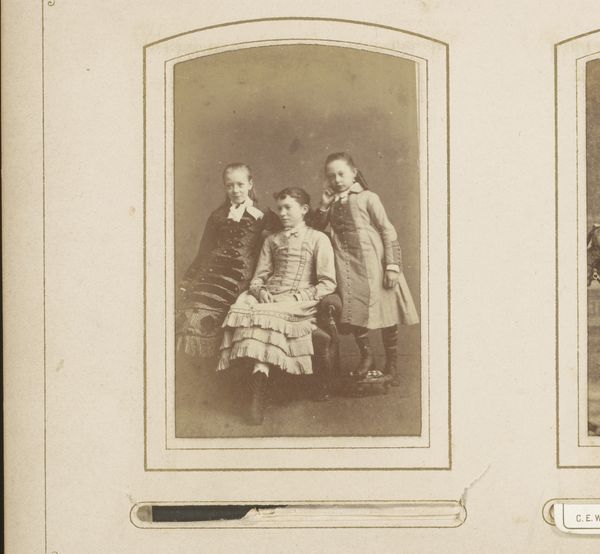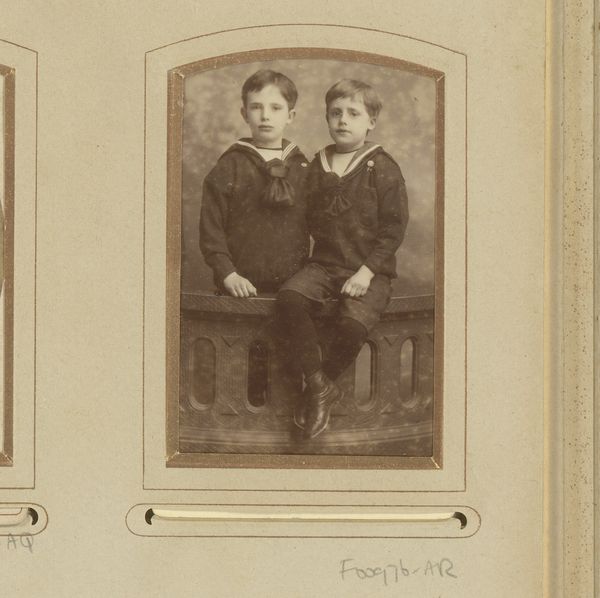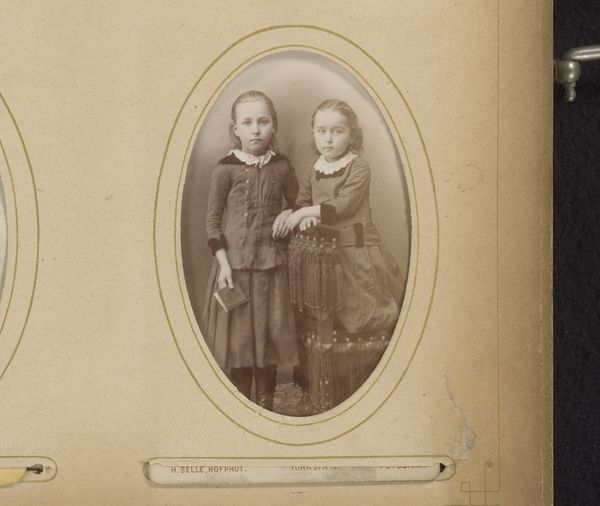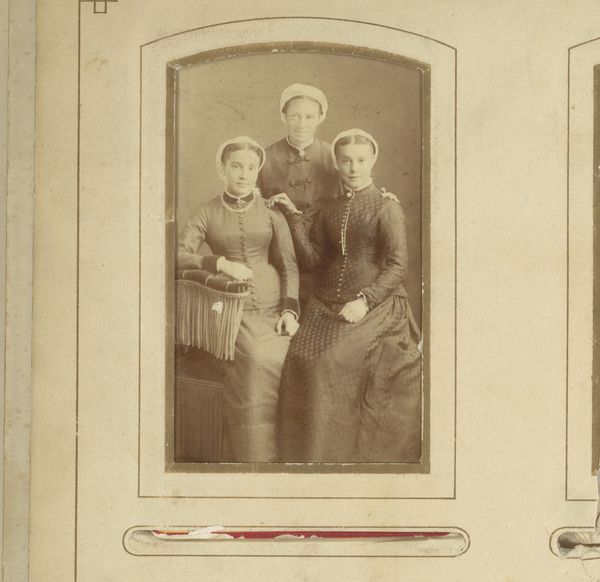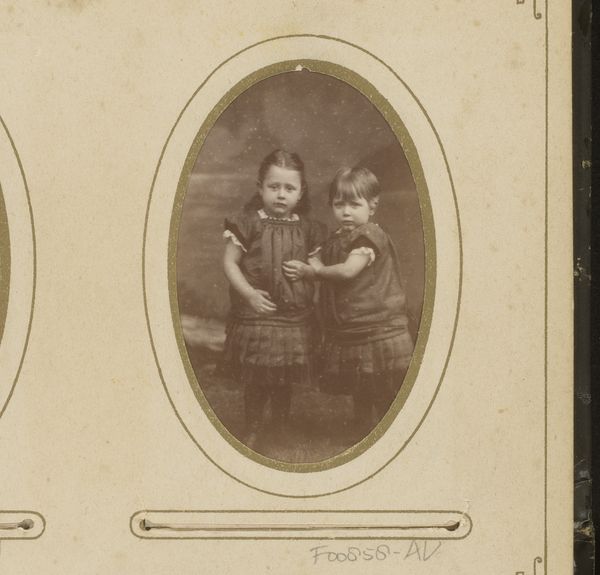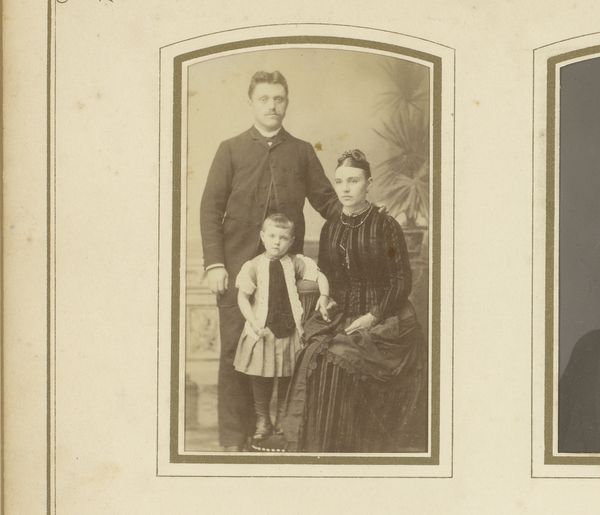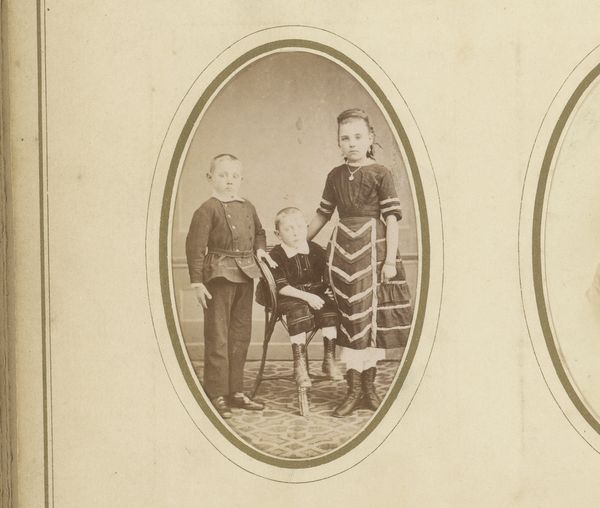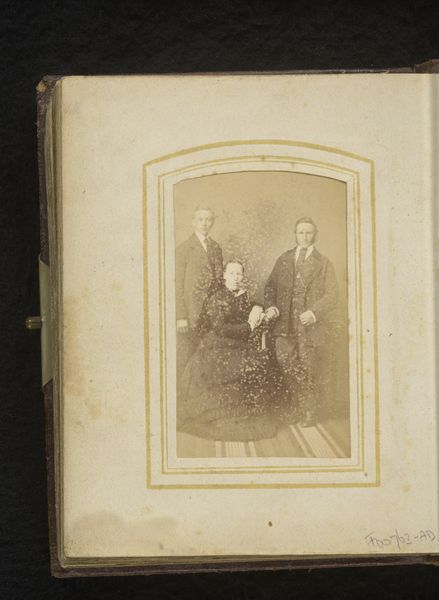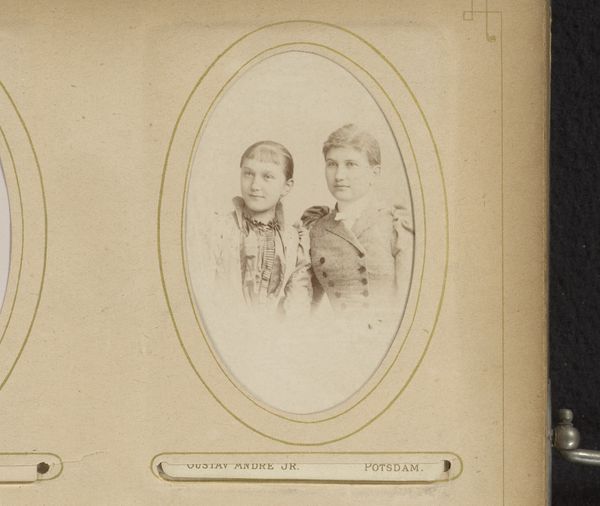
photography
#
portrait
#
aged paper
#
toned paper
#
vintage
#
photo restoration
#
impressionism
#
photography
#
historical photography
#
old-timey
#
19th century
#
genre-painting
#
golden font
#
historical font
#
columned text
Dimensions: height 82 mm, width 51 mm
Copyright: Rijks Museum: Open Domain
Editor: So, this is "Groepsportret met drie meisjes," a photograph dating between 1884 and 1895 by C. van der Aa & J. Chrispijn. It's a solemn image; the children look almost uncomfortable. How do you interpret this work, looking at it through a historical lens? Curator: It's important to remember the social context. Late 19th-century photography wasn't the quick snapshot we know today. Posing would be stiff, lengthy, and formal. What might seem like discomfort to us could simply reflect the social constraints placed upon young girls, particularly in terms of posture and presentation. Their clothes look similar and somewhat simple. I wonder if their dress reflects class and the constraints of the time, and if so, what kind of message are they trying to send? Editor: That makes sense. It’s a constructed image, so naturally, it presents a particular message. Thinking about class, could this image also be speaking to the limited opportunities available to young women? Curator: Precisely. Photography, while becoming more accessible, still held a certain weight. The girls in the portrait would most likely represent a family wanting to display status, respectability and perhaps subtly challenge some of those limiting gender roles through their access to the emerging medium. Look at how they directly engage the camera's lens, a rare sight in portraits from that period of young girls. It challenges the submissive, domestic narrative usually assigned to them. Does that perhaps reflect changes in society starting to allow different roles for young women, beyond what's expected? Editor: That's a powerful reading. I initially saw them as passive subjects, but you’re right; there’s a subtle resistance there. I am beginning to think about who they were and what options lay ahead of them. Curator: And that reflection, that empathy, is the essence of art history when combined with a knowledge of theory. We see not just the image, but the story, the struggle, and perhaps even the quiet rebellion within.
Comments
No comments
Be the first to comment and join the conversation on the ultimate creative platform.
